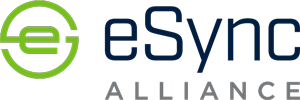IoT & Embedded Technology Blog
The Drive to Standardize Automotive Software Updates
by Brendan Bradley | 1/30/2024
With the growth of the software-defined vehicle (SDV) and advancements in electrification across the mobility space, over-the-air (OTA) updates have emerged as the go-to method for both the maintenance and enhancement of in-vehicle software and features. Both innovators such as Tesla and NIO, as well as their legacy counterparts in GM and Honda, have adopted OTA as a way to remotely improve customer satisfaction, delivering new capabilities and features to vehicles as well as carrying out critical functional fixes or security patches to vehicle drivetrains and infotainment systems.
Adopted from its successful use case in consumer electronics, with leading automotive OTA vendor Harman acquiring Red Bend back in 2015 to form the basis of its current vehicular OTA solutions, OTA has deeply penetrated the automotive industry. With its promising ability to become the future of vehicle maintenance, current initiatives across regulatory bodies, standards organizations, and industry consortiums have been focused towards developing a universal method for delivering robust and secure OTA updates.
 |
The first and most notable effort to set forth requirements regarding automotive software updates stems from the United Nations’ World Forum for Harmonization of Vehicle Regulations, commonly referred to as Working Party 29 (WP.29). Released in 2021, Regulation No. 156 (R156) sets forth both recommended cybersecurity requirements for software updates, as well as designs a type-approval framework for how automotive software updates are handled. The most impactful aspect of this regulation is the requirement on the part of OEMs to set up a software update management system (SUMS), a systematic approach to the development and deployment of software updates that must explicitly satisfy each of R156’s requirements, including but not limited to adequate verification and testing of software, the secure rollout of update packages, and the continuous monitoring of both security and effectiveness. |
 |
Founded by Excelfore, the eSync Alliance is an industry group consisting of a range of stakeholders within the automotive industry. The goal of this alliance is to develop a standard, multi-vendor, end-to-end solution for delivering automotive OTA updates that ties together OEMs, T1 suppliers, and hardware and software suppliers. The alliance envisions that, through establishing a common update architecture consisting of an eSync Server in the cloud, an eSync Client in the vehicle, and eSync Agents for each embedded device, the deployment of OTA updates will be far less complicated, enabling OEMs to better focus on security. The current eSync Alliance System and founding member Excelfore’s eSync OTA solution both comply with UN R155/156. |
.png) |
ISO 24089, titled “Road vehicles – Software update engineering”, harmonizes with R156 by standardizing the SUMS model for the delivery of automotive software updates. Published in February 2023, ISO 24089 sets forth both requirements for software update packages and campaigns, as well as best practices for the assembly, structure, and rollout of software update packages and campaigns. |
As these standards and regulations solidify the use of OTA in the automotive industry, VDC expects OTA updates to extend to complementary markets in the wider mobility and transportation space. Vendors such as Elektrobit, a subsidiary of Continental (FWB: CON), have introduced adaptations of their automotive OTA solutions for use in the two-wheeler market, with others such as Parker Hannifin (NYSE: PH) focused on delivering OTA updates to heavy machinery in the construction and mining industries.
Continued advancement in standards and regulation may further shift market dynamics, with OEMs moving away from the in-house solutions that characterized early adoption of OTA updates and towards more robust commercial products that can ensure compliance.
To learn more about the evolving OTA landscape, both within the automotive industry as well as across the wider IoT market, check out VDC’s report, Software Deployment, Maintenance & OTA Solutions for IoT Systems.